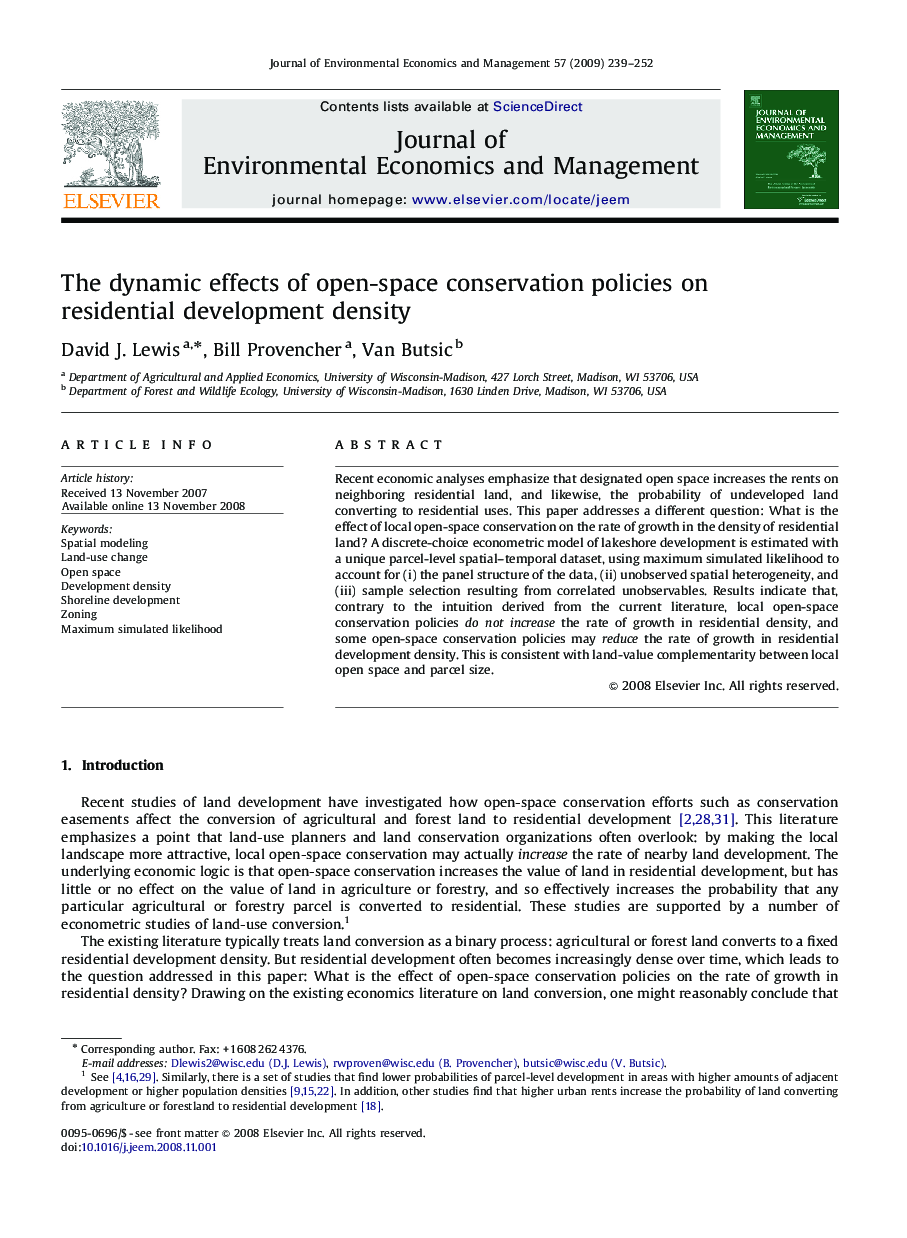| Article ID | Journal | Published Year | Pages | File Type |
|---|---|---|---|---|
| 959324 | Journal of Environmental Economics and Management | 2009 | 14 Pages |
Recent economic analyses emphasize that designated open space increases the rents on neighboring residential land, and likewise, the probability of undeveloped land converting to residential uses. This paper addresses a different question: What is the effect of local open-space conservation on the rate of growth in the density of residential land? A discrete-choice econometric model of lakeshore development is estimated with a unique parcel-level spatial–temporal dataset, using maximum simulated likelihood to account for (i) the panel structure of the data, (ii) unobserved spatial heterogeneity, and (iii) sample selection resulting from correlated unobservables. Results indicate that, contrary to the intuition derived from the current literature, local open-space conservation policies do not increase the rate of growth in residential density, and some open-space conservation policies may reduce the rate of growth in residential development density. This is consistent with land-value complementarity between local open space and parcel size.
